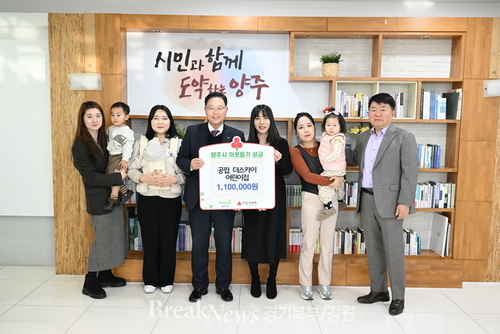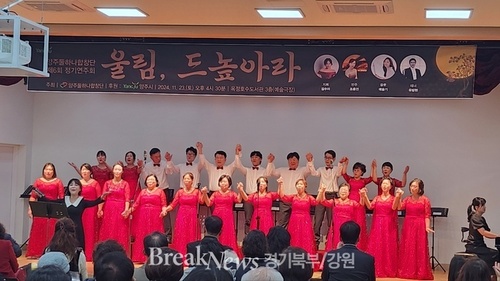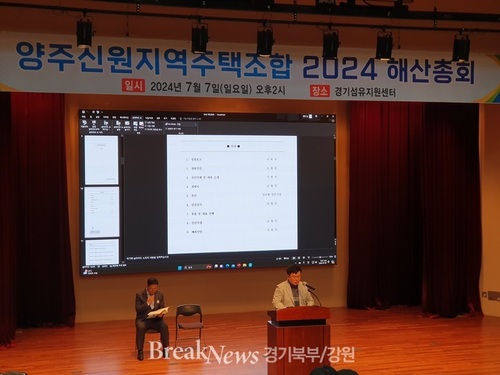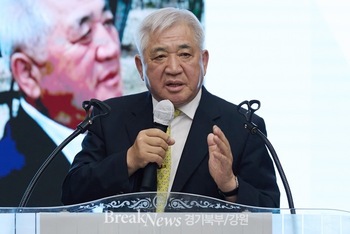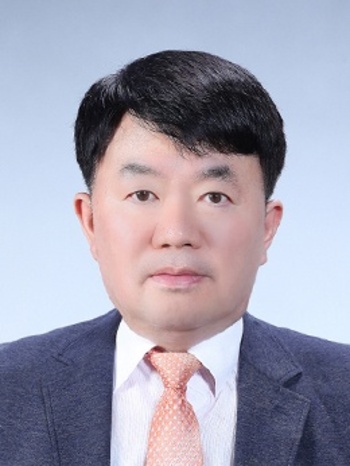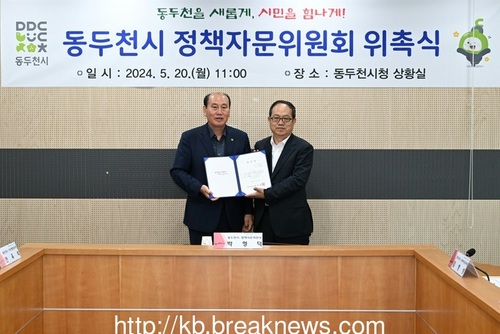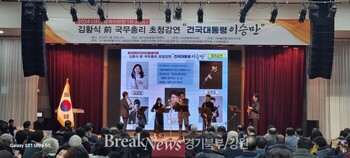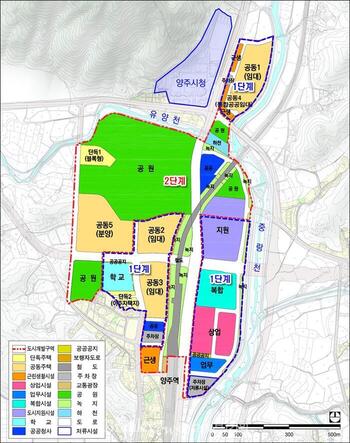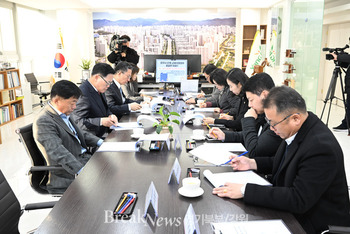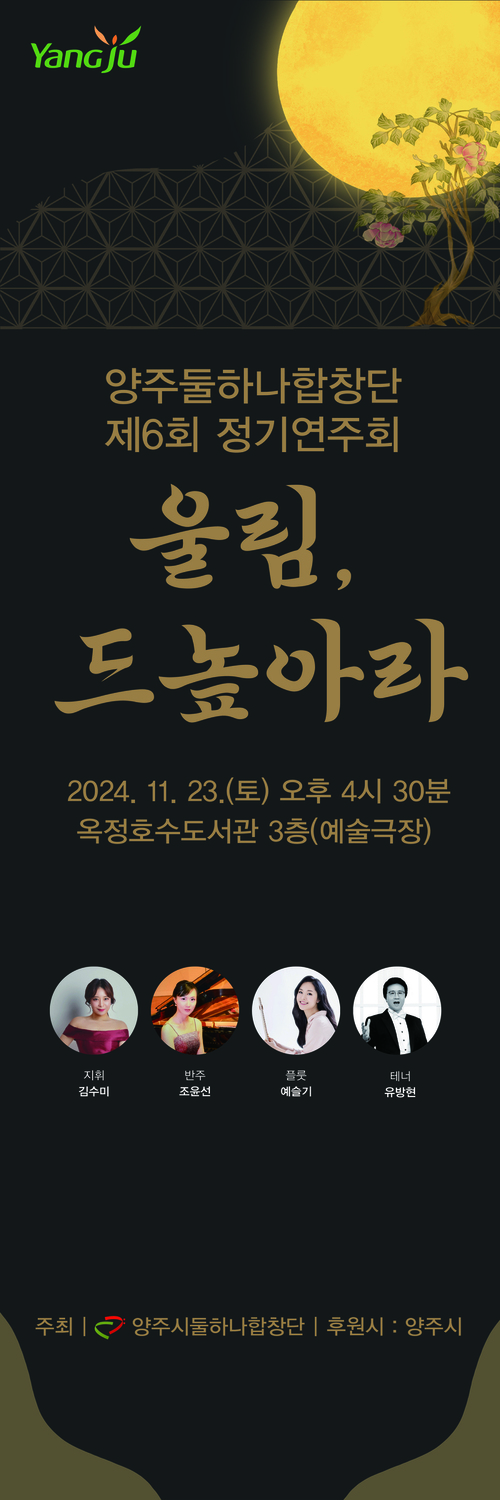원주환경청, 남·북한강 상류 하천 수질개선...부유물질 '감소'
비점오염원관리지역 지정 이후 지난 3년간 큰폭으로 감소
원주환경청, 남·북한강 상류 하천 수질개선...부유물질 '감소'비점오염원관리지역 지정 이후 지난 3년간 큰폭으로 감소
[남상훈 기자 = 원주] 원주지방환경청이 남·북한강 상류 비점오염원관리지역 주요 하천의 수질을 확인한 결과, 남한강과 북한강 모두 관리지역 지정 이후 부유물질이 감소해 하천 수질이 개선된 것으로 나타났다고 밝혔다.
환경부는 한강 상류 수질개선을 위하여 지난 2008년부터 흙탕물 발생 고위험지역인 고랭지밭 밀집분포 지역을 비점오염원관리지역으로 지정하고, 관리대책 수립, 흙탕물 저감사업 추진 등 수질개선을 위해 노력 중이다.
물환경정보시스템 수질측정망 자료에 따르면 비점오염원관리지역 지정 이후 연평균 부유물질 농도가 북한강 상류는 12.4mg/L(‘03~‘07년)에서 5.0mg/L(‘08~‘22년)로 59.5% 감소, 남한강 상류는 42.5mg/L(‘03~‘07년)에서 12.9mg/L(‘08~‘22년)로 69.7% 감소해 수질개선이 확인됐다.
또한, 원주지방환경청이 최근 3년(‘20~‘22년) 관리지역 주요 하천의 수질을 정밀 모니터링한 결과에서도 비강우시 남·북한강 모두 부유물질 농도가 감소하는 추세로 수질 개선이 되고있었다. 그러나 강우시 농도는 최근 3년간 증가되는 경향이 나타났는데, 이는 기후변화로 인한 국지성 호우 및 강우강도의 증가 등 강우형태의 변화에 의한 결과로 판단된다.
이에 원주지방환경청은 고랭지밭 흙탕물 저감을 위한 전략을 그간 발생한 흙탕물의 하천 유입을 최소화하는 유출경로 관리(침사지, 우회수로 등)에서 흙탕물 발생을 최소화할 수 있는 고랭지밭 발생원 관리로 패러다임을 전환해 흙탕물 저감사업을 추진 중이다. 또한 고랭지밭 발생원 관리의 일환으로 급경사지 밭의 경사도를 완화해 토사유출을 최소화하는 계단식밭과 경사면에 흐르는 빗물의 유속을 늦춰주는 고랑댐 등의 최적관리기법을 시범적으로 보급 중에 있으며, 실제로 보급 후 효과분석을 통해 고랭지밭의 흙탕물 발생 80% 이상 저감효과를 확인한 바 있다.
이 외에도 발생원 관리를 위해서는 주민 참여와 관심이 반드시 필요하기 때문에 이장, 부녀회장, 청년회장 등 마을리더 중심의 민간 거버넌스인 맑은 하천 지킴이를 구축하고 활성화하는 등 흙탕물 저감을 위해 노력 중이다.
김정환 원주지방환경청장은 “그간 흙탕물 저감 사업을 통해 점진적인 수질개선을 확인하였으며, 앞으로 원활한 흙탕물 저감 사업 보급과 확대를 위해 지역주민들의 자발적인 참여와 관심이 반드시 필요하다”고 당부했다.
*아래는 위 기사를 '구글 번역'으로 번역한 영문 기사의 [전문]입니다. '구글번역'은 이해도 높이기를 위해 노력하고 있습니다. 영문 번역에 오류가 있을 수 있음을 전제로 합니다. *The following is [the full text] of the English article translated by 'Google Translate'. 'Google Translate' is working hard to improve understanding. It is assumed that there may be errors in the English translation.
Wonju Environment Agency, improving water quality in the upper reaches of the South and North Han Rivers... Suspended matter 'reduction'
Significantly decreased over the past 3 years since designation of non-point pollution source management area
[Reporter Nam Sang-hoon = Wonju] The Wonju Regional Environment Agency confirmed the water quality of major rivers in the non-point pollution source management area upstream of the South and North Han Rivers.
To improve water quality in the upper reaches of the Han River, since 2008, the Ministry of Environment has designated areas with a high risk of muddy water generation as non-point pollution source management areas, and has been making efforts to improve water quality by establishing management measures and promoting muddy water reduction projects.
According to the water quality measurement network data of the Water Environment Information System, the annual average concentration of suspended solids after designation as a non-point pollution source management area in the upper reaches of the Bukhan River ranged from 12.4 mg/L ('03 to '07) to 5.0 mg/L ('08 to '22) to 59.5 % decrease, the upper reaches of the Namhan River decreased by 69.7% from 42.5mg/L ('03-'07) to 12.9mg/L ('08-'22), confirming water quality improvement.
In addition, as a result of detailed monitoring of the water quality of major rivers in the management area by the Wonju Regional Environment Agency for the past three years ('20-'22), the concentration of suspended solids in both the South and North Han Rivers during rain has decreased, indicating that the water quality is improving. However, the concentration during rainfall tended to increase over the past three years, which is judged to be the result of changes in rainfall patterns, such as localized heavy rainfall and increased rainfall intensity due to climate change.
Accordingly, the Wonju Regional Environmental Office has shifted the paradigm from outflow route management (gritches, bypass ditches, etc.) to minimizing muddy water generation to source management in highland areas for strategies to reduce muddy water in highland areas. A muddy water reduction project is in progress. In addition, as part of the management of highland fields, optimal management techniques such as terraced fields that minimize soil runoff by easing the slope of fields on steep slopes and furrow dams that slow down the flow of rainwater flowing on slopes are being distributed on a trial basis, and are actually being distributed. Through post-effect analysis, it was confirmed that the muddy water generation in highland fields was reduced by more than 80%.
In addition, since residents' participation and interest are essential for source management, efforts are being made to reduce muddy water by establishing and activating a clean river guardian, a private governance centered on village leaders such as village heads, women's associations, and youth associations.
Kim Jung-hwan, head of the Wonju Regional Environment Office, said, “We have confirmed the gradual improvement of water quality through the muddy water reduction project, and the voluntary participation and interest of local residents is absolutely necessary for the smooth supply and expansion of the muddy water reduction project in the future.”
이 기사 좋아요
<저작권자 ⓒ 브레이크뉴스 경기북부 무단전재 및 재배포 금지>

댓글
남상훈, 원주시, 원주지방환경청, 남한강, 북한강, 수질개선, 부유물질, 감소, 고랭지밭, 흙탕물, 저감사업, 비점오염원관리지역, 하천 관련기사목록
|
많이 본 기사
환경 많이 본 기사
|












